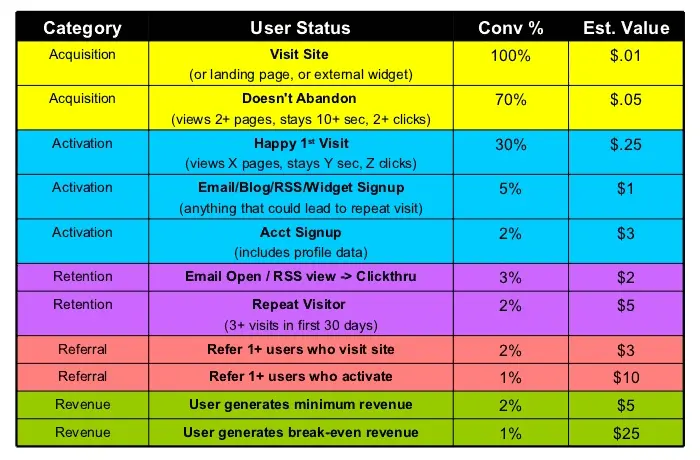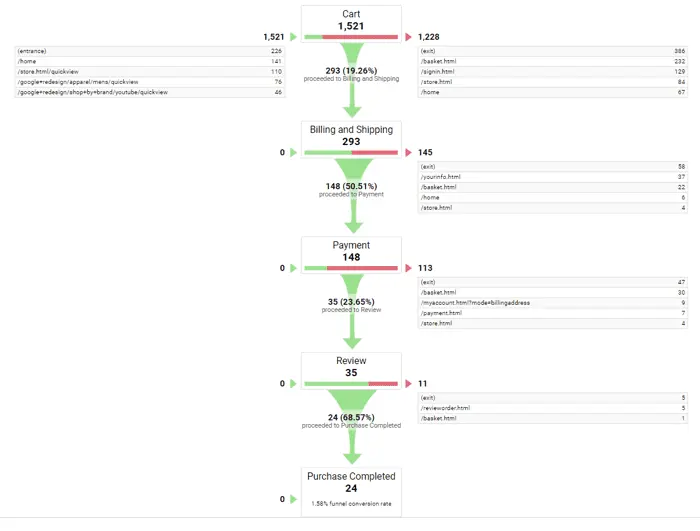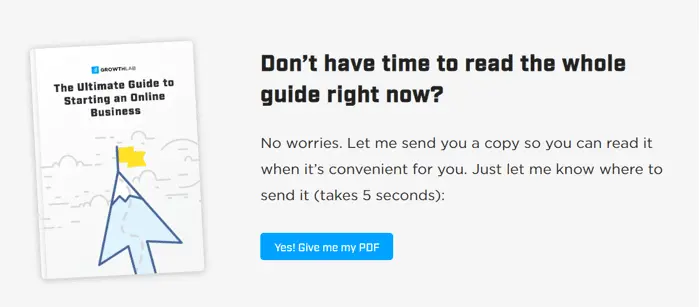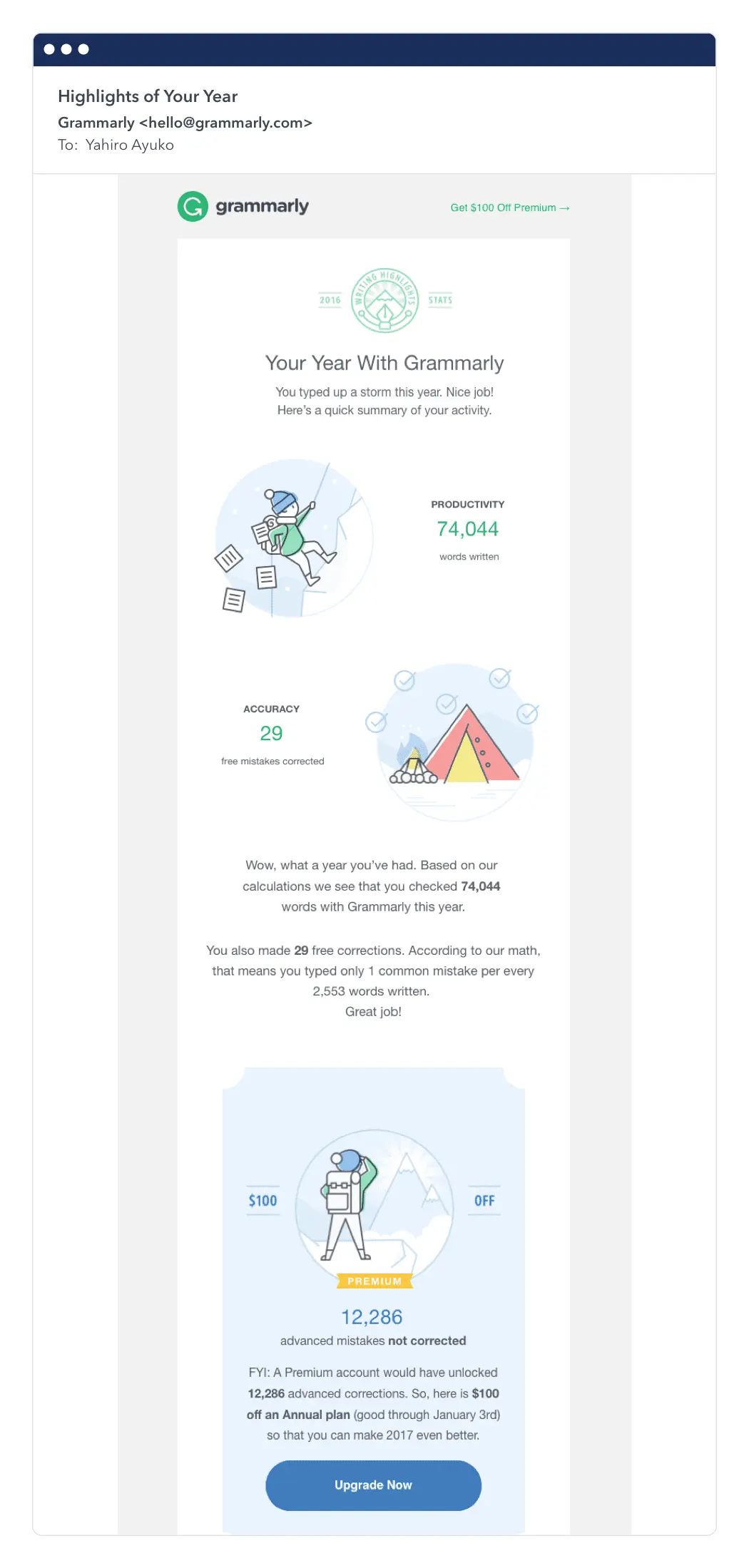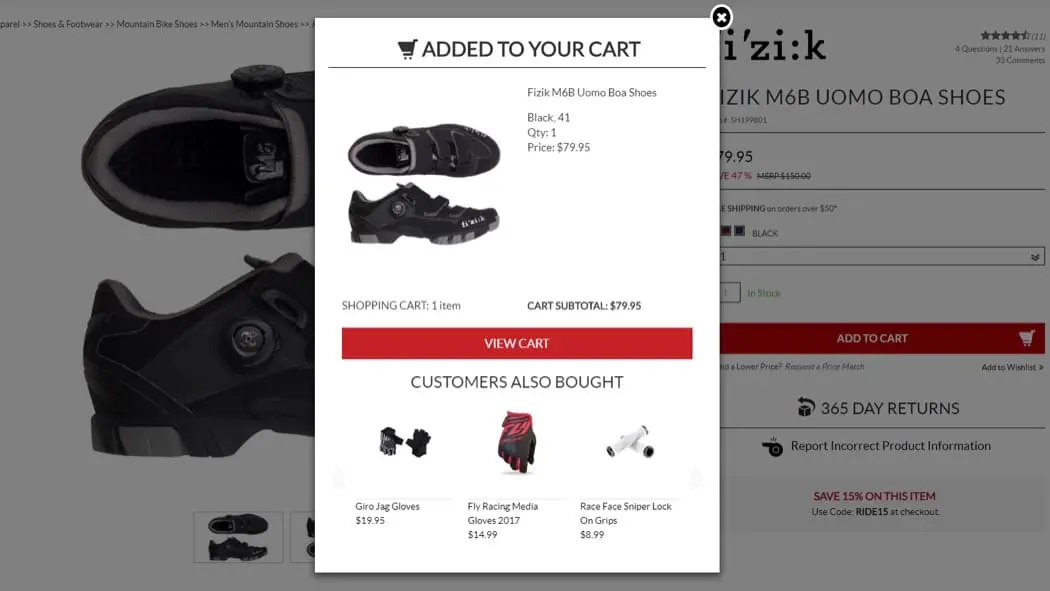- All Posts
- /
- Micro conversions: What they are and why you should be tracking them

Micro conversions: What they are and why you should be tracking them
Data Management-
 Chris Hexton
Chris Hexton
-
Updated:Posted:
On this page
Every business sets goals to lead them to success. It could be user sign-ups, the number of products sold, or services that customers are paying for.
While reaching these goals is important, it won’t happen overnight.
For instance, think of how you normally shop online:
- You may have found the store through social media or search
- You read their home, about, and product pages
- And if you like what you see, you add an item to your cart and purchase it
All of this might happen over the course of a day, or it might take weeks or months!
The point is that when a major business goal (like a sale) happens, it’s always a combination of smaller steps that led to it.
These small steps are known as micro conversions.
What are micro conversions?
Micro conversions are actions taken by a user that move them closer to completing primary business objectives, e.g purchasing a product or paying for a consultation. The culmination of micro conversions is a macro conversion, which is the primary goal of your website, product, and customer experience. According to the Neilson Norman group, you can even further divide micro conversions into two categories:
- Process Milestones: These are conversions that represent linear movement toward a primary macro conversion.
- Secondary Actions: Are not the primary goals of the site, but are desirable actions that indicate the potential for future macro conversions.
For example, think about converting a customer via your website. In this context, “process milestones” are steps taken on your website towards a macro conversion.
And if you run a SaaS business, a customer moves from your homepage to your features page, and then to your pricing page and signs up.
That’s a linear flow towards a conversion and it’s made up of several process milestones.
On the other hand, a secondary action indicates that a customer might someday complete a macro conversion.
Some examples of secondary actions include:
- Reading a blog post
- Subscribing to an email list
- Watching a video
- Following a brand on social media
Both process milestones and secondary actions are micro conversions because, while they’re not the main objective, they’re moving people closer to it.
The more people that you can get to complete your micro conversions, the greater your macro conversions will be.
Why you should be tracking micro conversions
Tracking micro conversions is a critical part of improving your overall macro conversion rate. Here are some specific reasons you should track your micro conversions:
They can teach you a lot about your users’ behavior: Whether a micro conversion leads to a sale or not, monitoring them can reveal important insights that can help you serve current and future customers better. Take the case of UK-based Morphsuits, who design and sell innovative dress costumes. They wanted to improve conversions on their website and hired Conversion Rate Experts (CRE) to help. As CRE monitors micro conversions, like product searches on a website, one of the things they noticed was that many visitors were searching for a type of suit that the company wasn’t selling. Since they knew that it was something a lot of people wanted and could estimate sales numbers based on search queries, Morphsuits started making the new suit. Unsurprisingly, it became a top seller.
Morphsuits continued to employ this system and have increased their number of suits from 70 to over 300.
They help us track channel effectiveness: Not all the channels you spend resources on will yield a sustainable ROI. Tracking micro conversions, specifically secondary actions, help you know when a channel doesn’t justify what’s being spent on it.
Noah Kagan of Okdork learned the value of tracking micro conversions years ago. He found out that while he had 13,090 followers on Twitter, a post he promoted on the platform only had 109 clicks. That’s a click-through rate of 0.8%.
His email list of just 3,547 subscribers, on the other hand, had 882 clicks, a 24.8% click-through rate.
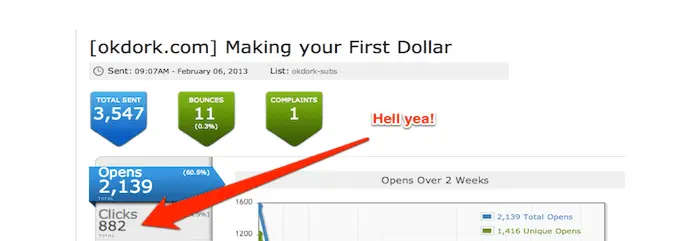 Monitoring micro conversions across channels led to this insight
and taught him to invest more in
email marketing.
Monitoring micro conversions across channels led to this insight
and taught him to invest more in
email marketing.
They help you identify and remove bottlenecks in your funnel: You’ve probably heard of the term Pirate metrics or AARRR metrics, created and popularized by Dave McClure of 500 Startups. If you haven’t, it’s a lifecycle marketing framework consisting of several important stages:
- Acquisition
- Activation
- Retention
- Referral
- Revenue
Here’s a hypothetical marketing funnel broken down using this framework:
The Pirate Metrics framework is based on monitoring the important micro conversions that drive primary business goals of “successful, long term customers.”
The framework is useful as it helps you monitor the bottlenecks in your funnel. For example, using the data above, it’s obvious that a good way to increase revenue is by increasing email signup rates from 5%.
In their book “Making Websites Win,” CRE explained that to get a cumulative 100% growth in sales, all you have to do is increase individual conversion rates across your funnel. For example, by improving your:
- Ads by 19%
- Landing page by 19%
- Shopping cart by 19%
- Checkout by 19%
You compound your growth to achieve an overall 100% increase in sales.
Perhaps counterintuitive at first glance, you only need to increase the effectiveness of each step by 19% (and not 25%) because each improvement compounds on top the previous one.
For example, starting with conversion rates like this:
10,000 – Ads 1,000 – Landing page 100 – Cart 10 – Checkout
A 19% improvement at each stage leads to:
11,900 – Ads 1,416 – Landing page 168 – Cart 20 – Checkout (100% increase in sales)
Micro conversions best practices
1. Map and improve the path customers take towards macro conversions
We’ve seen that the only way to reach macro conversion goals, is to optimize all the micro conversions that lead up to it. To do this, you have to map and track the process milestones that a customer takes towards their path to purchase.
An e-commerce store, for example, can map out the path customers take from discovery to purchase.
E-commerce store Bellroy regularly runs email promotions, with one of their process milestones looking something like this:
In the example above, we can map out the micro conversions as follows:
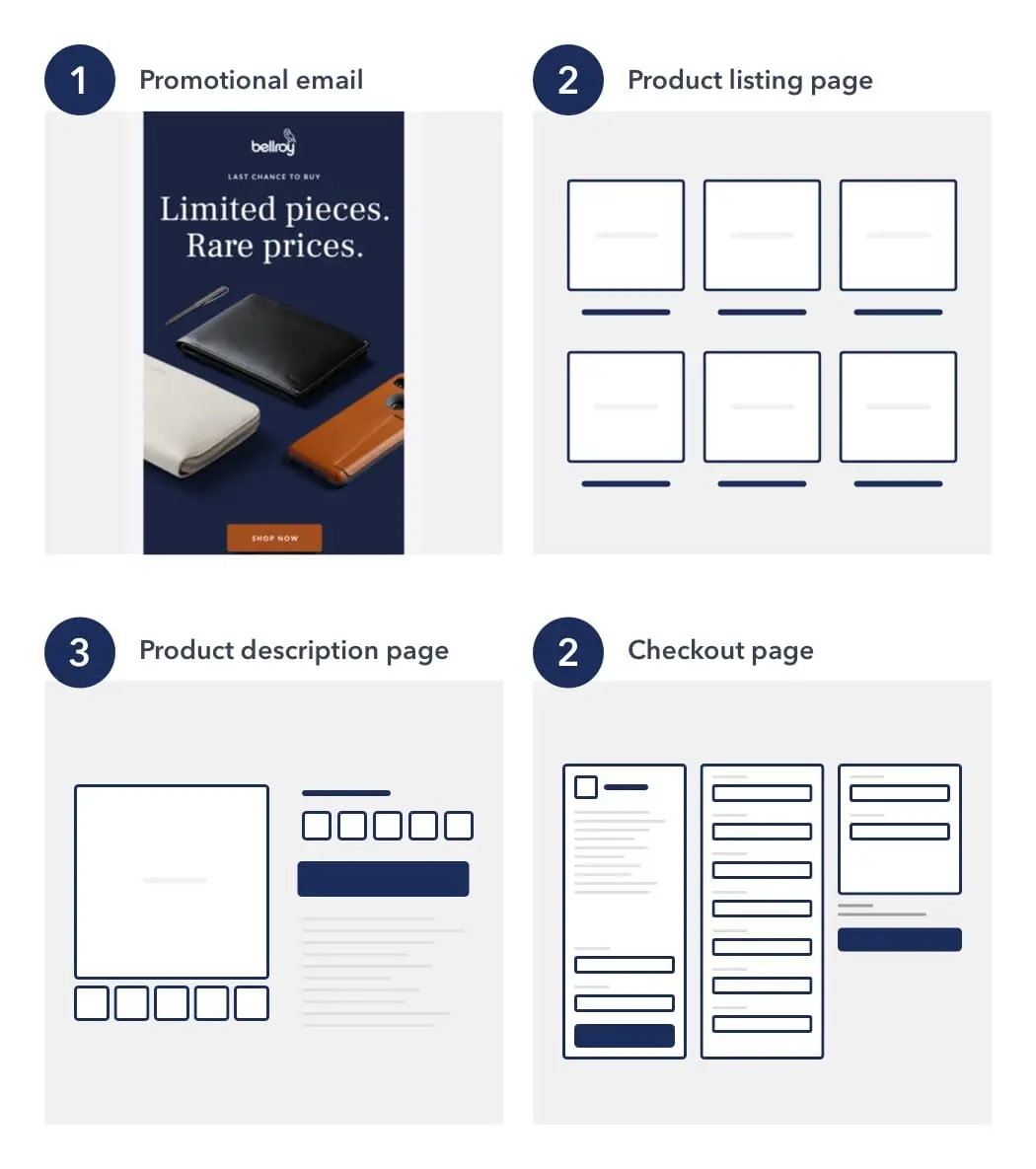 Once we know the steps users are taking, we can track each
individually and see where they fail to convert. Here’s an
example of what this looks like for an e-commerce store tracking
micro conversions from “add to cart” to “purchase complete” with
Google Analytics:
Once we know the steps users are taking, we can track each
individually and see where they fail to convert. Here’s an
example of what this looks like for an e-commerce store tracking
micro conversions from “add to cart” to “purchase complete” with
Google Analytics:
You can see from the funnel visualization, that a lot of users drop off after adding an item to cart, and only about 50% get past the billing and shipping stage.
Payment is also another major bottleneck, with only 23% moving beyond that stage. To fix the bottlenecks, you could try:
- Reducing steps to purchase (Bellroy only has three on their website)
- Add more payment options (Paypal for instance)
- Remove the review page
- Make the cart more prominent
2. Customize and personalize the user experience
Whether it’s a process milestone or secondary action, one of the most common ways to increase conversions is through customization. How can you do this for different micro conversions?
Email Signups: This is a very important secondary action for a lot of companies, and can be vastly improved with personalization.
For example, Ramit Sethi of Growth Lab, customizes lead magnets to increase his email signup conversion rate. Paired with a lengthy guide, he added a PDF summary.
With such an article-specific lead magnet, Ramit caters to his readers’ needs and might be able to convert more of them.
Email click-throughs: Personalized emails lead to a higher ROI for your email marketing. They have both higher open and click-through rates than non-personalized emails.
If you want to improve email conversion rates, then you have to start personalizing your messaging. Take a look at this email from Grammarly:
Grammarly ends the year by celebrating this user’s accomplishments on their platform, showing how they could’ve helped more with a premium plan.
Then they wrap things up by offering a $100 discount for next year’s plan.
View product description: This is a valuable process milestone for e-commerce stores, as viewing the product description precedes purchase.
Personalization can be of help here as well.
For example, some e-commerce stores now use recommendation software to show products that are more relevant to shoppers’ interests.
Jenson’s USA does just this. When a customer adds an item to cart, they’re shown a popup with recommendations of other products they might also be interested in:
3. Focus on channels that convert
You can’t always improve your conversion rates for every channel. Sometimes the best thing to do is to double down on what’s currently working, rather than trying to increase your conversions on channels that aren’t.
Remember that you’re not trying to optimize for micro conversions alone, especially in the case of secondary actions.
The ultimate goal is still a macro conversion.
What this means is that micro conversions can easily become vanity metrics when used in the wrong context.
For example, you can get more people to click on your email using deceptive tactics, like this retailer that was called out on Twitter:
 But people still won’t convert when they see the offer. In this
case, optimizing for micro conversions can harm marketing
efforts further down the line.
But people still won’t convert when they see the offer. In this
case, optimizing for micro conversions can harm marketing
efforts further down the line.
To track micro conversions using Google Analytics, hop over to HubSpot to learn how to get set up.
The way forward…
Getting people to buy or signup is a multi-step process. And breaking down your primary objective (a macro conversion) into smaller milestones and actions can help you improve that process.
When you’ve mapped out your micro conversions, all that’s left is improving them.
And because each small improvement compounds, incremental changes can lead to dramatic results for your entire business.
